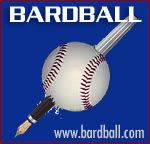Are the White Sox...dumb?
Much as I hate to pass judgment on any baseball organization’s decisions, being as that I’m just a writer and not actually someone running a baseball team, it’s rather difficult to shine much positive light on what the Chicago White Sox have done this off-season.
Last season, the White Sox had the AL’s third most productive offense; only the Yankees and Red Sox scored more runs. Consider that for a minute. The way some people talked about the team, however, you’d think they were incapable of pushing men across the plate.
Even lacking a consistent leadoff man (Willie Harris hasn’t yet gotten himself together), taking into account the disappointing performances from brothers Roberto and Sandy Alomar, the injury to perennial threat Frank Thomas—who wears out pitchers simply by taking so many pitches—an off year from shortstop Jose Valentin and third baseman Joe Crede’s lack of development, Chicago still scored 85 more runs than division champion Minnesota.
The Sox tied for the league lead in homers, which helped them, but they didn’t take many walks (largely because of Thomas’ injury). With Thomas back, 2005 could have been a very interesting season offensively.
So what do the White Sox do? Decide that it’s time to ditch their approach. No more home runs. No working deep counts. Instead, under manager Ozzie Guillen, who was, as a player, one of the worst hitters in modern baseball history, the Sox are gearing up for a “speed and defense” approach, a strategy effective in baseball about as often as the ol’ “Statue of Liberty” play works in football.
First, the Sox traded their best player, Carlos Lee, to the Milwaukee Brewers. Lee’s salary will soon be spiraling into baseball’s upper strata, but that didn’t seem to faze the always-penurious Brewers...and apparently, Lee wasn’t even traded because of his salary. At last week’s Soxfest (an annual club-run fan convention), manager Guillen complained that Lee didn’t slide hard enough into a Twins infielder in a game where a Minnesota outfielder ran over White Sox catcher Jamie Burke in a home-plate collision, then intimated that this is a reason Lee was traded.
Apparently, Guillen would rather have his best player risk injury and possible suspension in order to get revenge rather than have him remain in the lineup.
For Lee, the Sox got righthanded reliever Luis Vizcaino, effective but plagued with arm problems, and Scott Podsednik, who won the NL’s 2003 Rookie of the Year award at the advanced baseball age of 27. Podsednik stole 70 bases last year for the Brewers, a league-leading total that clearly set Guillen drooling.
Unfortunately, Podsednik, for all his basestealing ability, is still a poor offensive player; he hit .244 last year with a horrid .313 on-base percentage, making him not only a bad hitter but also a miserable leadoff man. And to make things worse, he may not even play center field for the White Sox. The ONLY reason Podsednik belongs in the lineup is if he can play center, but the club is now hedging, saying that Aaron Rowand, who enjoyed a breakout last year, may remain there in 2005.
Should Podsednik play left field—a spot that demands offense, because defensively it’s the second-easiest position on the diamond—for Chicago, he will almost certainly be the league’s worst regular outfielder.
On the other side of the outfield, to replace departing free agent Magglio Ordoñez, the Sox signed 31-year-old Jermaine Dye, who since breaking his leg in 2001 has average at best. He is valued for his take-no-prisoners attitude, which the Sox need (Ordoñez was not a vocal leader), but while Dye’s offensive numbers may improve a bit in moving from cavernous Network Associates Coliseum in Oakland to the relatively comfortable U.S. Cellular in Chicago, he won’t match what Ordoñez gave the Sox.
Shortstop Valentin is also gone, and in his place will be Juan Uribe, a utilityman in 2004 who started the season hot and progressively cooled down. Like most of the remaining Sox, Uribe rarely walks. In fact, it’s hard to find anyone besides Frank Thomas in the lineup who will work the count. Paul Konerko, who had a big 2004 after a terrible 2003, drew 69 passes last season. Harris only walked 51 times, which at least was more than Dye, Uribe, Crede, new catcher A.J. Pierzynski, or Rowand did.
The new offensive “strategy” the Sox are embracing—contact hitting, moving runners along, and basestealing—might be doable if the Sox actually had the personnel to do this. But Podsednik’s poor leadoff skills, Harris and Uribe’s lack of baserunning savvy, and the relative immobility of Konerko, Dye, Crede, and Thomas make the strategy a non-starter.
Had the Sox used Lee, or the money spent on signing Pierzynski, Dye, and a contract extension for Rowand on quality starting pitching, that might be an improvement. The Sox’ ERA last year was 4.91, better only than Detroit and Kansas City. Two in-season trades, bringing over Freddy Garcia (who cost the Sox catcher Miguel Olivo and outfielder Jeremy Reed) and Jose Contreras, were of only fitful gain, and signing Dustin Hermanson and Orlando “El Duque” Hernandez to two-year deals makes little sense; both are journeymen at best, incapable of shouldering a heavy load.
Some rabid fans think that the Sox are going to play more spirited baseball this year, that they’ll run more, hustle more, and won’t depend on home runs. I don’t know; hitting home runs and drawing walks seems to work awfully well in baseball, certainly much better than littleball does. If I were the White Sox, I’d be trying to emulate the 2004 Red Sox, not the 1986 White Sox of Ozzie Guillen’s heyday.



2 Comments:
Boy, this analysis is almost as good as your political analyses!
4:25 PM, December 02, 2005
Gosh, I love anonymous comments. Takes a lot of guts.
10:43 AM, October 18, 2008
Post a Comment
<< Home